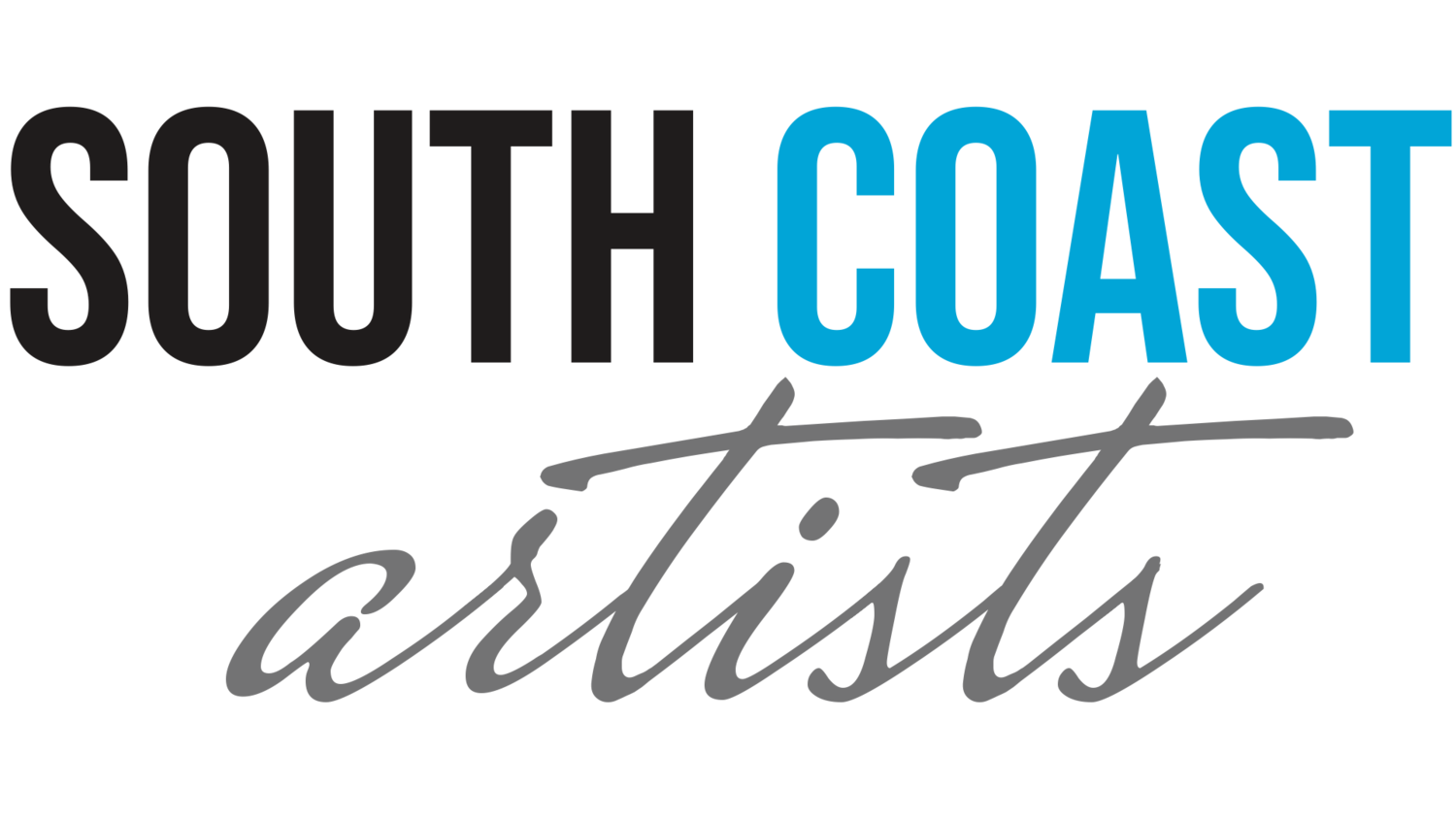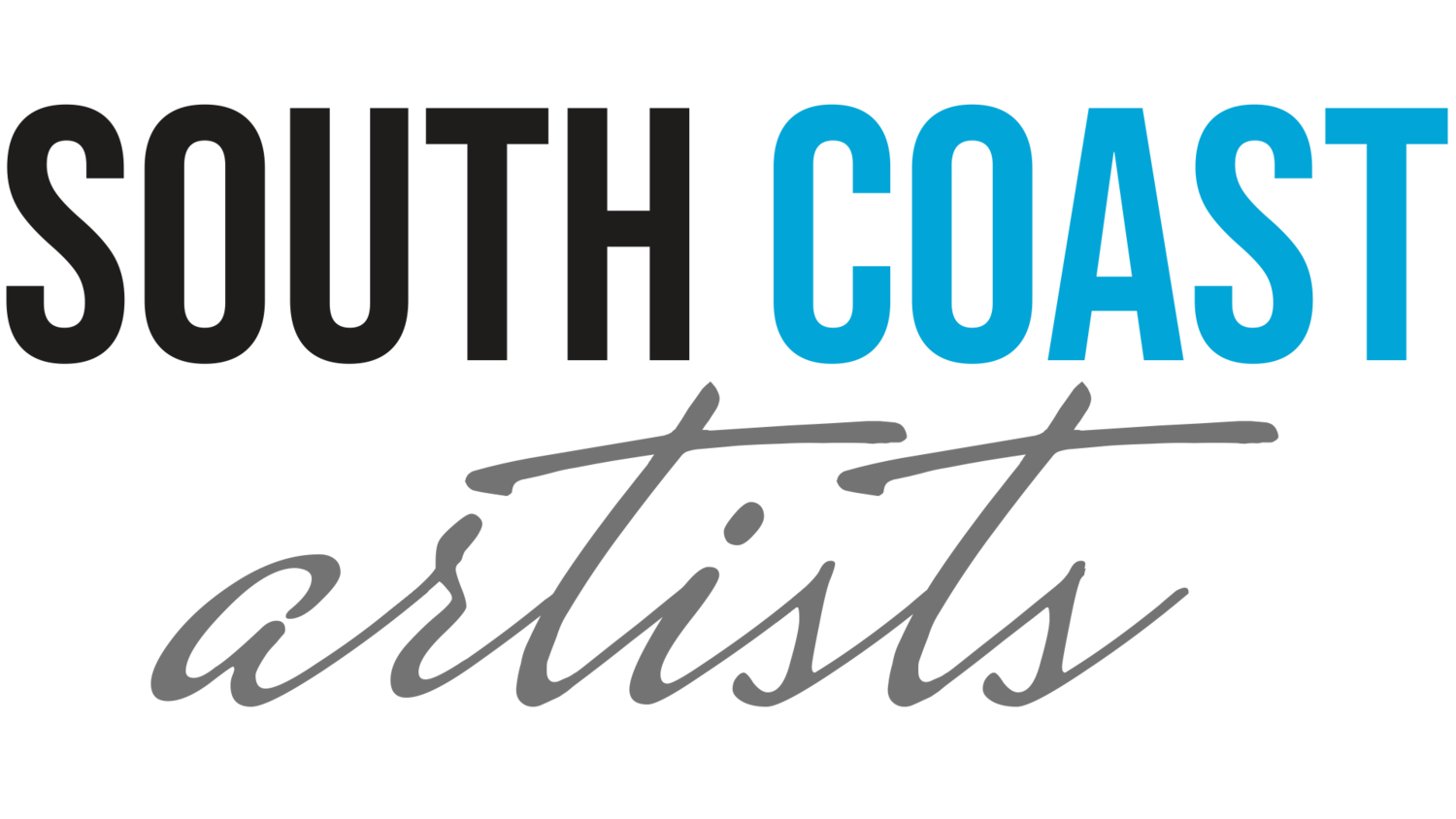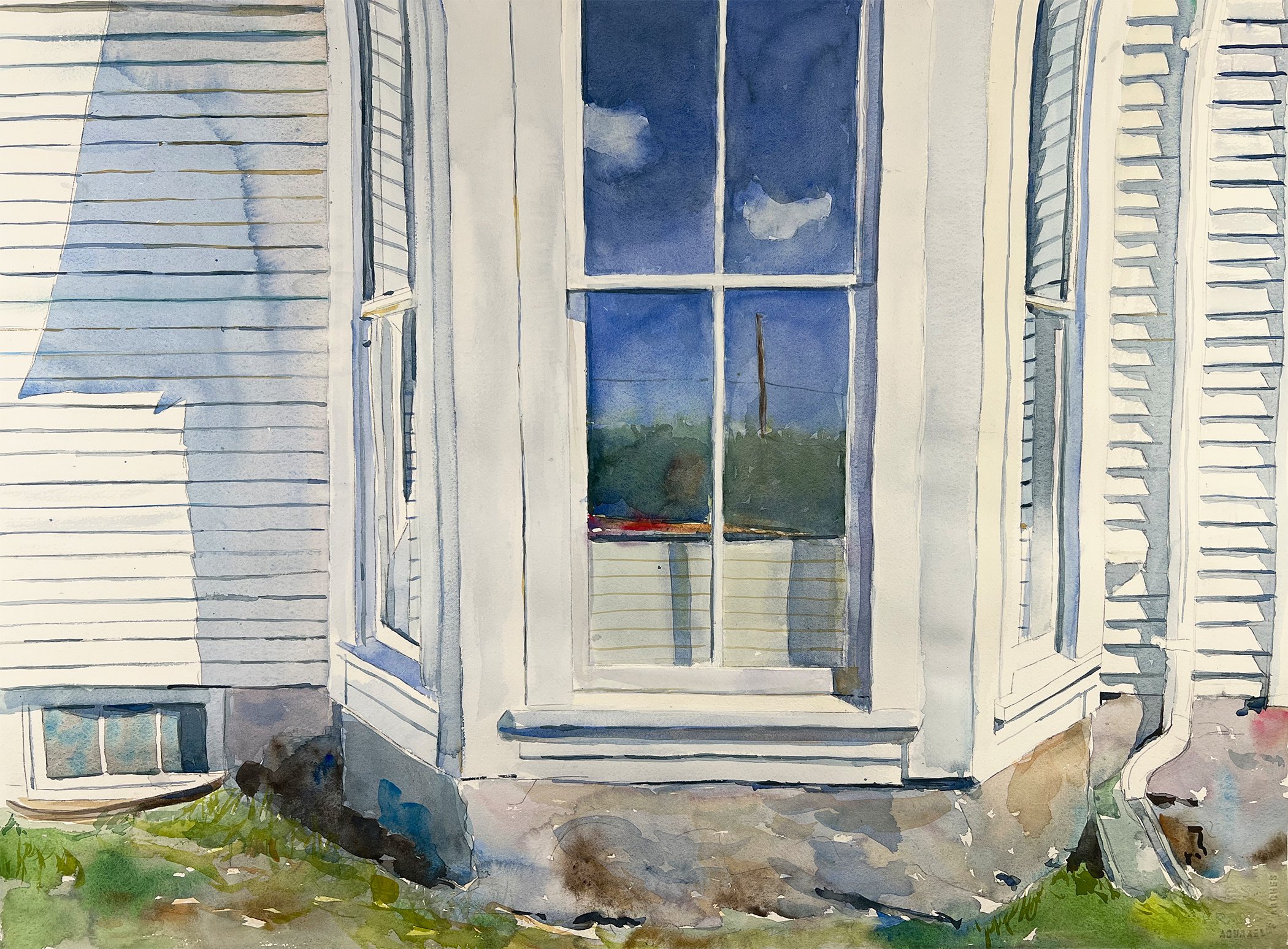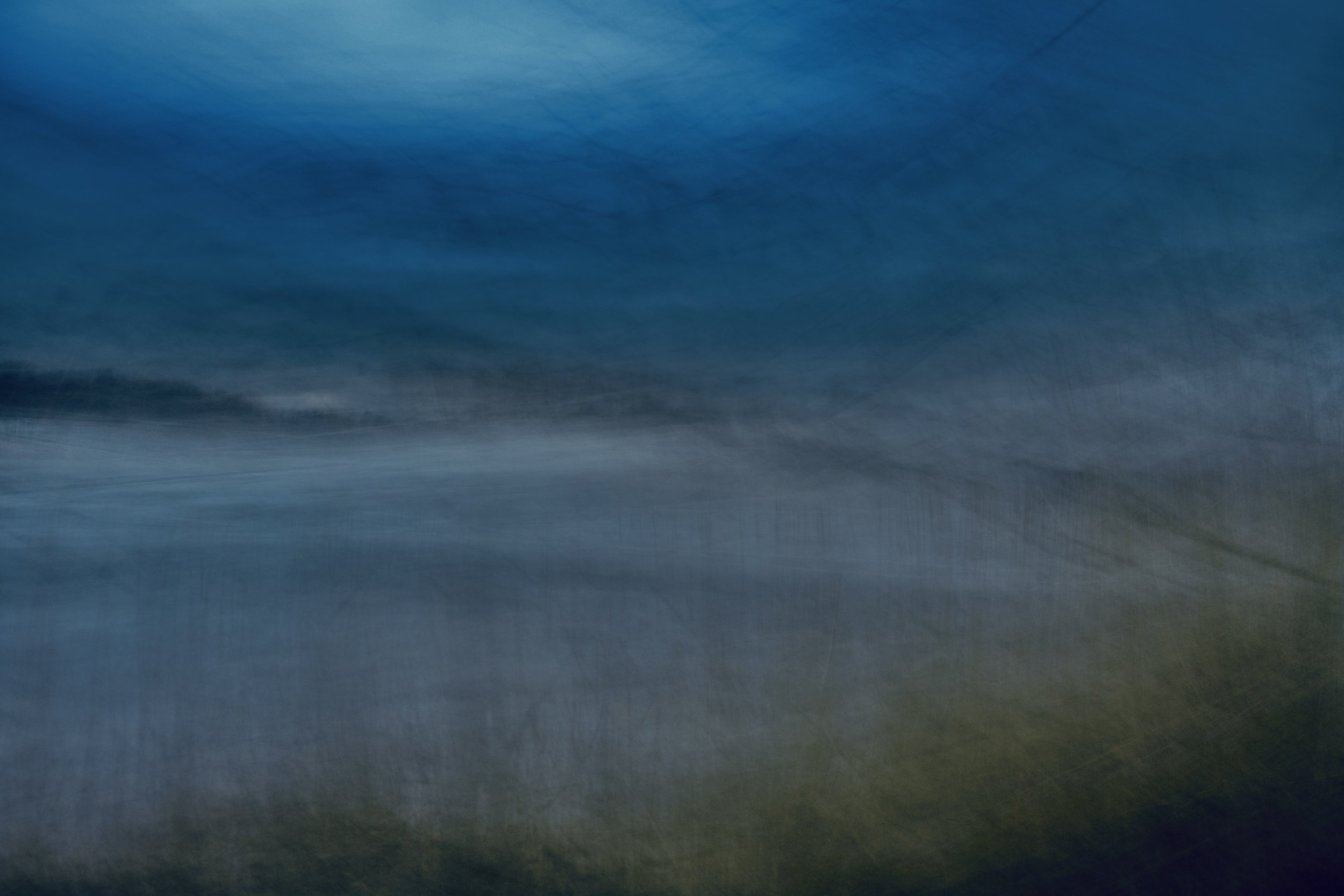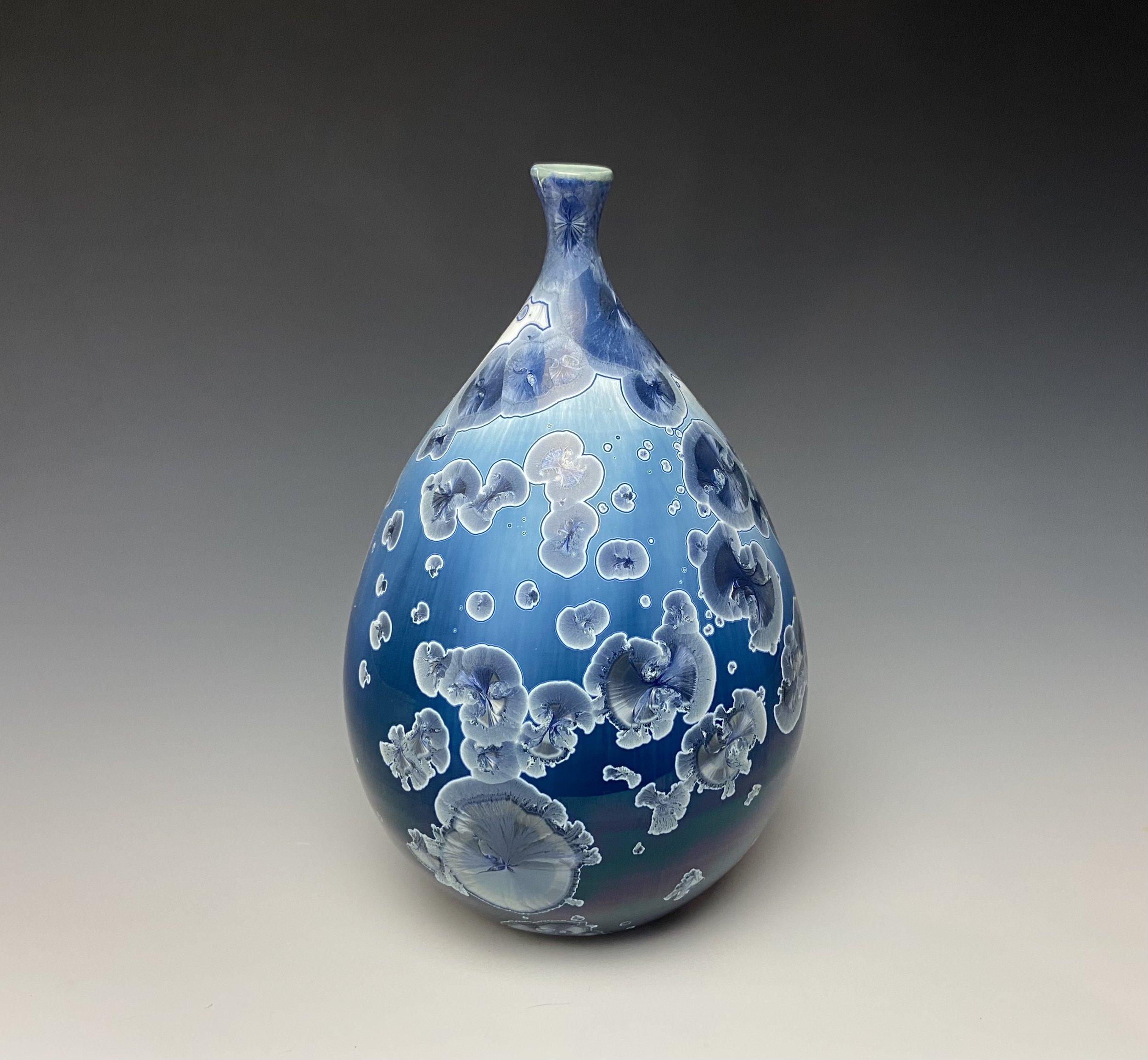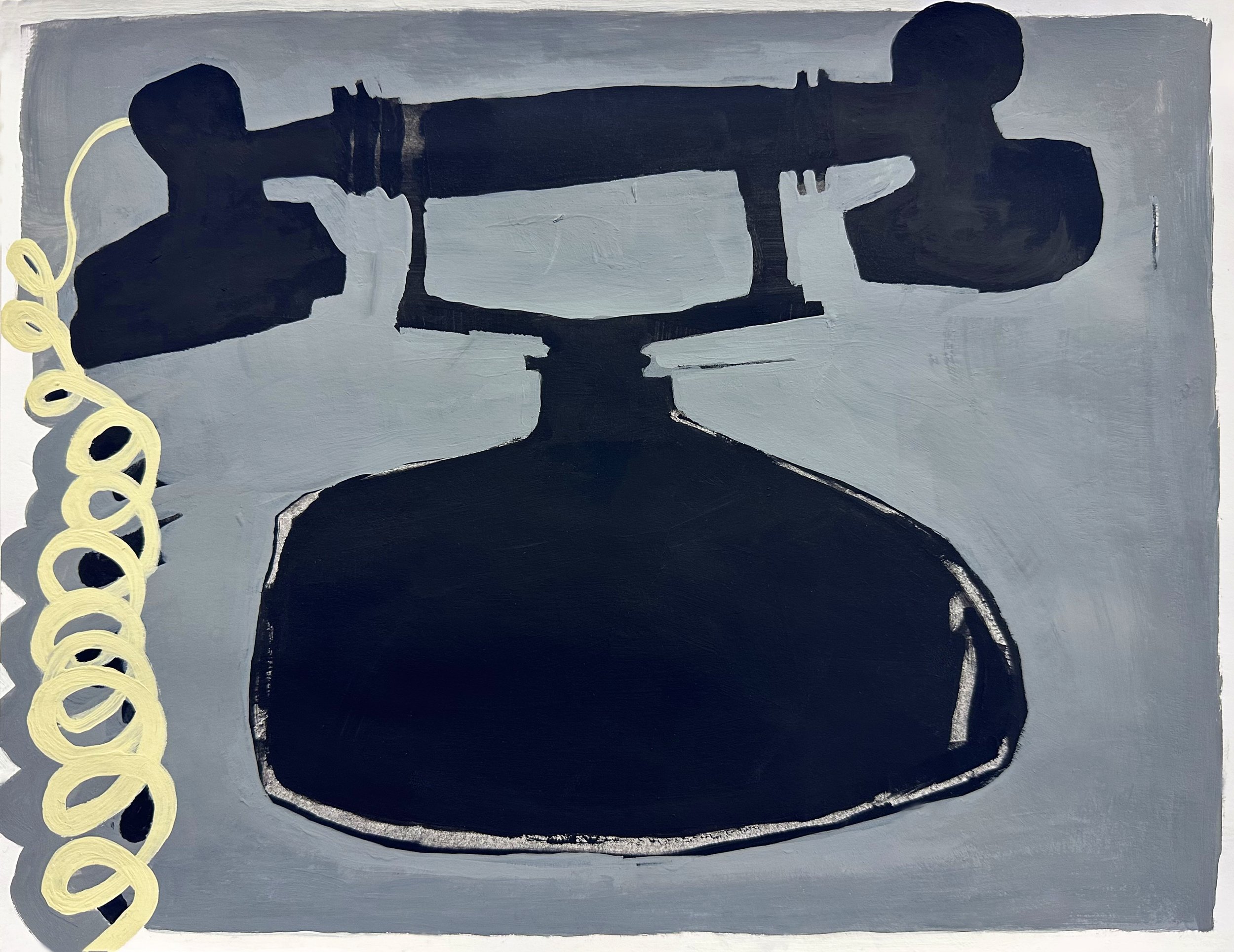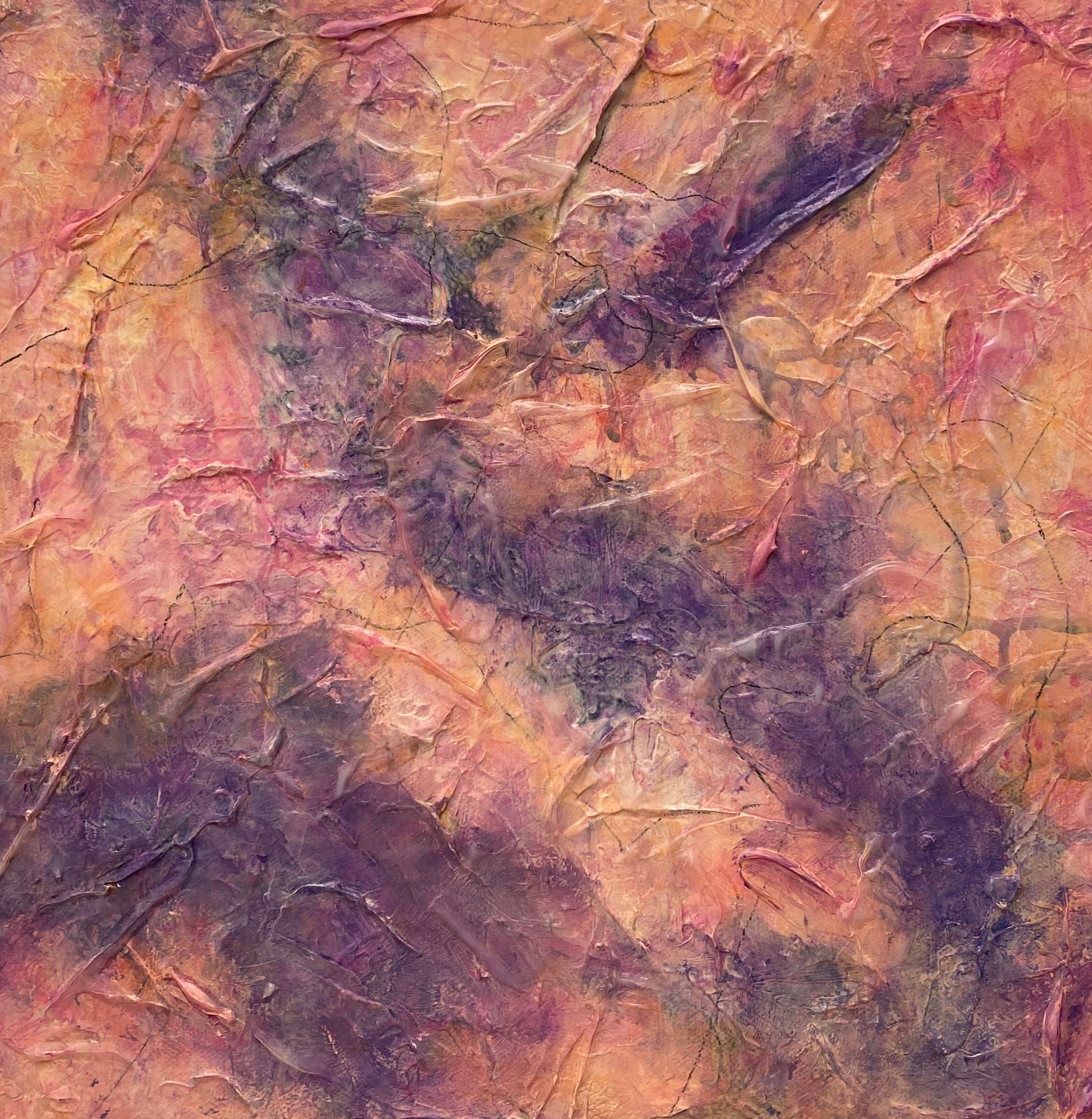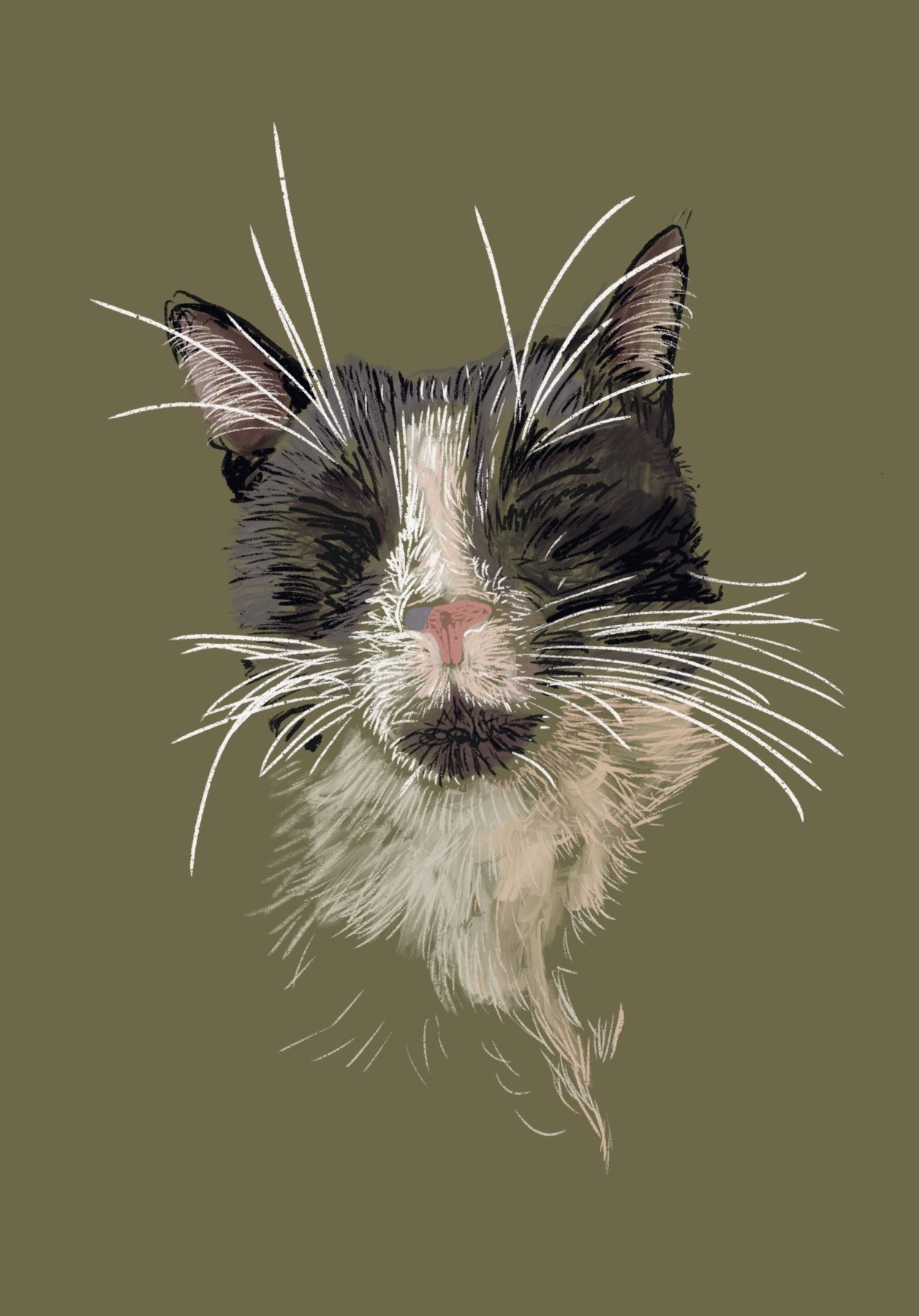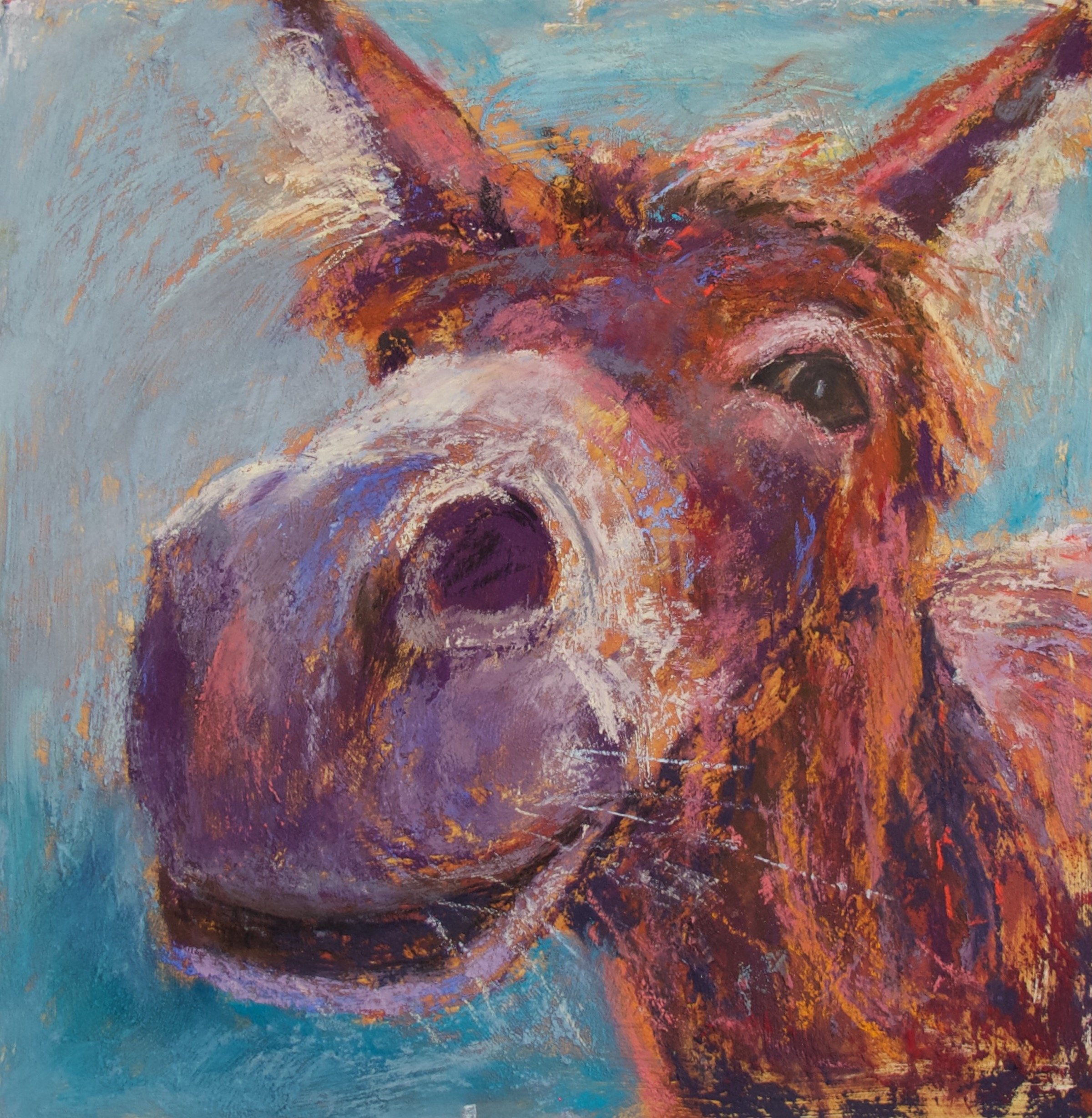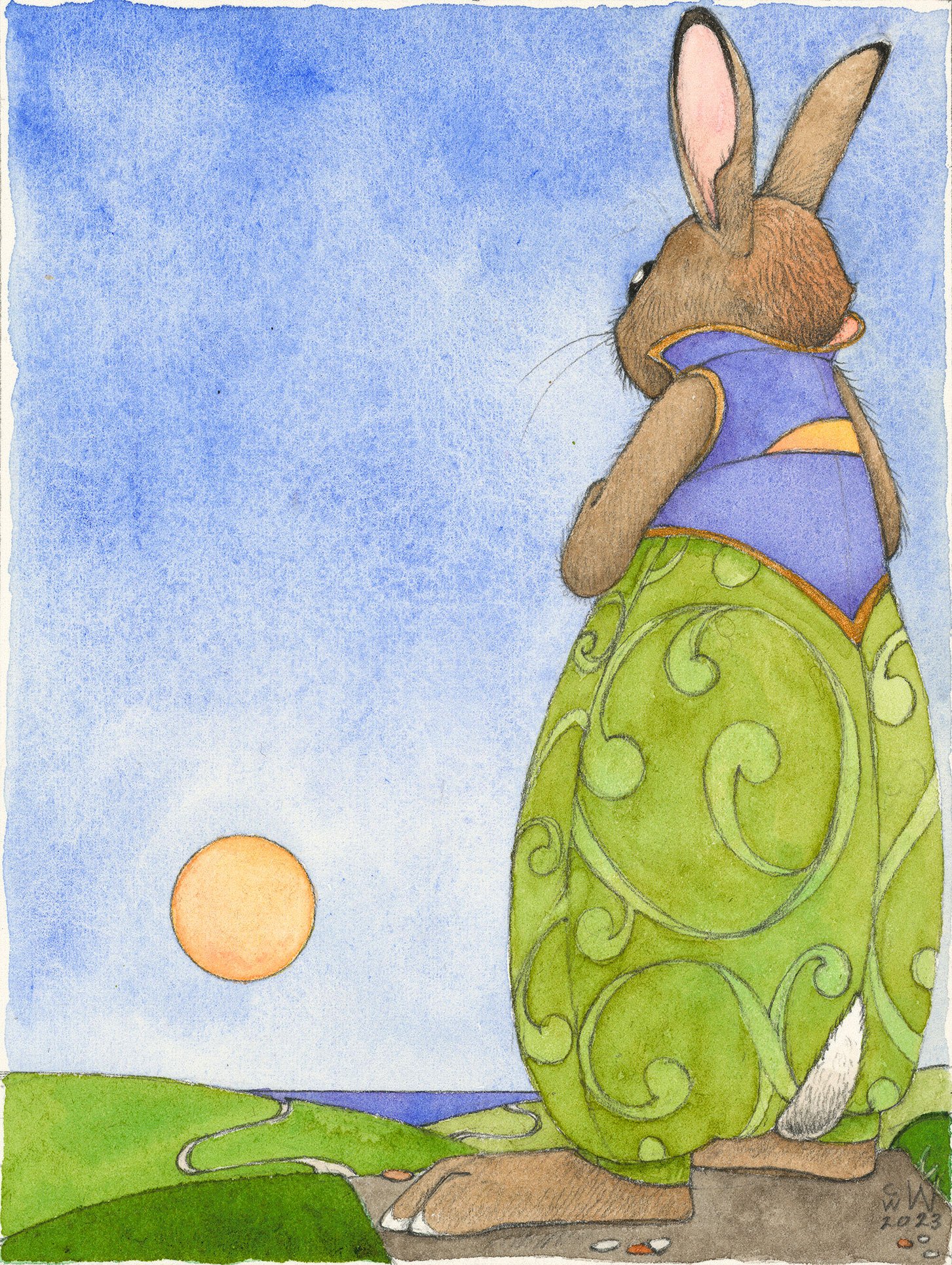Reflections
ANNUAL ART CONTEST
To celebrate the 20th anniversary of the SCA Open Studio Tours, we invited participating Open Studio Tour artists to enter our Annual Art Contest. This year’s theme is Reflections. Artists were encouraged to seek insight and draw upon their experience as an SCA artist and create a work of art that looks back at their growth and ahead as they explore a creative new year.
Reflecting upon our work, as a group and individually, allows us to grow stronger and more confident.
Mea Duke, 2023 Annual Contest Juror
ABOUT THE JUROR: This years juror is Mea Duke, the director of Dryden Gallery in North Providence, Rhode Island. Duke holds a BFA in Studio Art and Art History from the University of Rhode Island, and an MFA from the School of the Museum of Fine Arts at Tufts University. In addition to her curatorial work, Duke is an artist and educator, most recently teaching art at Harvard University and Massachusetts College of Art and Design. Duke’s work has been exhibited in galleries throughout the Northeast, has been the recipient of numerous awards, and featured in several publications such as New American Paintings, Studio Visit Magazine, and URI Magazine. When not at Dryden Gallery, she works in her Pawtucket studio.
First Prize
Michael Walden
Two Swimmers
Lithographic Monoprint
11” x 16”
Juror Comments:
Two Swimmers, a lithographic monoprint by Michael Walden, features two photographic images layered over each other. Both images are duplicated horizontally creating a mirror image. One represents the surface of rippled water, printed in a deep, inky blue. The second “mirrored” layer in black ink represents the male figure, wearing swim trunks and cropped at the shoulders and right above the knee. The scale of the work is intimate, however the composition itself holds a great presence due to the use of symmetry.
The juxtaposition of the two images, at first glance, would indicate the art historical theme of bathers. However, the symmetrical mirroring of the two layers prompts the viewer to pass by the apparent, furthering the conversation within the piece about (self) reflection, enlightenment, figuration, the awe of the sublime, or the layers’ visual shifting eliminating a hierarchy of the represented images. Walden’s statement communicates these principals by saying the work “focuses on illuminating the dialectic of obscuring things–which sometimes speaks to discomfort or hiding–and emerging things–which speaks to the process of enlightenment… Enlightenment only comes with reflection.”
The conceptual warhorse of this piece is the use of mirrored imagery and equally weighted layering. Both images are printed with equal visibility, allowing the viewer’s focus to seamlessly switch between the figure and the water’s surface. By repeating the imagery (mirrored horizontally), the print has the illusion of a single fold similar to a book which, in turn, subtly asks the viewer to approach this work more intimately than a standard composition. Walden’s use of the figure and treatment thereof deepens the significance of this, as the figures are quartered in towards the other, creating a nod to our personal self-reflections. By cropping the figure at the shoulder, the identity of this figure becomes empathetic, allowing the viewer to import their own self into the narrative. It becomes less about the physical body in space as an object and more about the body as a “dialectic” communicator, seeking understanding through opposition and enlightenment through reflection.
Second Prize
Vidar Haaland
Bay Window
Watercolor
22” x 30”
Juror Comments:
Bay Window, a watercolor painting by Vidar Haaland, represents a ground-floor section of a white clapboard house. Each clapboard reveals a keen observation of glancing sunlight within the cool shadows. The gutter, foundation, basement window, and the bay window itself make this composition dynamic, while at the same time, convey the reality of the house’s architectural vernacular and a sense of place.
What makes this watercolor more than what is described above is the use of reflections on the double hung windows. The side windows are reflecting the sides of the house that are out of view from the composition. The center window is where the viewer of the work is implicated. Here, we see the sky with two clouds, a telephone pole with wires, a grassy horizon, an indication of the house’s interior, and most importantly, the slight indication of someone’s reflection in the window (at the approximate center of the picture plane). Is this the artist at work observing his subject? Or is this me, the viewer, seemingly enjoying the sense of light and geometry, only to realize the self as voyeur, looking into the windows of another’s home?
Haaland’s painting conjures relations to luminicsm and American Realism, and summons a reference to the historically notable work of art, Les Meninas (The Maids of Honor) by Diego Velasquez. Here, Velasquez paints himself into the group portrait, looking around his easel and out at the viewer. In Haaland’s Bay Window, the portrait is of the white clapboard house and the artist’s reflection (or is it yours?) is the humorous, yet implicating presence of an outside observer.
Honorable Mention
Cecilia DelGaudio
Reflections (2020)
Marble
8.5” x 12” x 7”
Juror Comments:
Reflections (2020) is a carved marble figurative sculpture by artist Cecilia DelGaudio. The nude figure is depicted sitting on the ground with the head and torso leaning over bent knees, obscuring the figure’s face. A swath of fabric is wrapped around the lower portions of the legs and feet. The figure’s hair is falling forward over the knees and gradually morphs into the folds of the fabric, merging the two together seemingly as one form.
The figure’s face being tucked down points to this being a personally intimate portrayal of the female figure - not in an outwardly presenting pose like the figures in, for example, Édouard Manet’s painted figures (e.g. Olympia or Le Déjeuner Sur I’herbe). The subject of the sculpture could be, on one side, in a moment of recovery (physical or emotional), self comfort, or rest. On the other side, this figure can be viewed as being in a pose of self-protection, reclusiveness, or defeat. In this latter scenario, the carved hair flowing into the draped fabric points to one’s self as a source of comfort, as a blanket can reference safety, comfort or concealment. Here, the hair covers the body as a form of comfort, like the blanket.
The way DelGaudio uses the rough texture and smoothed polish of the marble to distinguish the different planes between the body and fabric is not only a simple and effective way to convey tactility and capture or reflect light, it gives the viewer a sense of ease. This well-earned technical ease conceptually allows the viewer to empathize with the figure as the artist’s hand is coming through in a more honest, personal capacity. This is a welcomed facet of the work, pulling it away from the classical traditions of figurative marble sculptures.
View all of the entries from our artists below:
Cali Almy Waking Rabbit Vessel 9" x 6" Clay My work represents explorations of nature and landscape. Some pieces are intended to depict a macro or expansive view across a marsh or coastline, and some are of a more micro perspective of the forest floor. These landscapes are inspired by places I have loved my whole life in southeastern Massachusetts. I primarily create work in clay on a potter’s wheel and at times add hand built elements. I am focused on the simplicity of form and enjoy creating contrast with expressive surfaces. With my latest forms, the Rabbit vessels, I am beginning to examine a more narrative element in my work and how certain symbols in nature have shaped my stories. To me, rabbits reflect spring, newness, and creativity.
Gretchen Almy The Herd 6"x12" Oil & Graphite This piece was done recently reflecting back to my roots of drawing horses before painting them. I was navigating the horse form by moving the pencil across the board in a sketch like style, simplifying the form. The paint and wash helped shape the form and soften the lines. All in hopes to capture the essence of the animal without all the detail.
Bruce Bailey I feel the air of another planet 19"x16" Digital Giclee Inspired by Arnold Shoenberg, String Quartet No.2, setting of Entrückung (Transcendence) poem by Stefan George. I first heard of this in a talk by Leonard Bernstein, ca. 1973. First version of this design done soon after. Revised several times, with most recent 03/11/2023.
Michele Bailey Green Wave 12"x36" Oil on Canvas The ocean has inspired me since I was a child: the roar of the waves, the smell of the salt water, and the rhythm of the waves rolling in over & over again entrances me. What especially catches me, every time, is the sunlit glint of green as the wave crests and curls -- magical!
Kim Barry Potent 36"x48" Oil on Canvas I have been inspired by the flowers of Mondrian and the potent, stored energy of flower bulbs. In reflecting about life as a creative woman I feel my deep, potent, energy stored in my being and in this painting was fueled by it.
Dot Bergen Emrgence 20"x16" Encaustic In this piece I use depth as a metaphor for time, suggestive of weathering or erosion, which imparts the question of 'what came before'. This is fitting for the theme of Reflections on our 20th Anniversary of SCA. This piece built with layer upon layer of tempered beeswax reflects on my participation over the years as a South Coast Artist, building on my past experiences to grow and emerge as an accomplished artist.
Meredith Brower Skeleton Fork Fern Mandala 12"x12" Eco-Art
Lisa Busnengo Mutual Reception 24"x30" Abstract Acrylic 'Mutual Reception' is the reflective interplay of masculine and feminine energy principles both actively and passively engaged in the full exchange of their impact one onto the other.
Susan Cabral Sail 20"x24" framed Acrylic and Oil I love painting boats and water because I love reflections. The reflections constantly change color and move. It makes me smile.
Dan Connolly Moonlit Crossing 16"x20" Photograph Giclée single exposure photograph on cotton rag paper.
Robert Dec Neil, A Tribute to Alex K 24"x18" Acrylic on Photo Transfer on Board The Artist's original photo was transferred to cradled PVC board and acrylic paint was applied to many areas to create a contrast of texture with the intent of also preserving the essence of the photo,
Cecilia DelGaudio Reflections 2020 8.5"x12"x7" Marble "Reflections 2020" is what I carved as I reflected on how fortunate I was to have survived the first wave of Covid in March of 2020. The long haul back to health left me unable to work for many months but so very grateful for the undisturbed, focused time the pandemic provided with fewer distractions in the studio and time to really concentrate on my art making. However, I was deeply troubled by the fear and division that seemed to overtake the world. The vulnerable image, closed off from others with both mouth and nose hidden seemed to capture who we had become. And yet there is meant to be the peaceful, grateful side of "just being" captured here as well. I have been carving stone and wood for several decades and I am especially drawn to the human figure for it's potential to reach all observers. I still have much to learn and hopefully more to teach. Past experience includes teaching Sculpture at the Worcester Art Museum and in my own studio to those who wish to learn the slow, low tech and gratifying experience of carving.
Iria DeValles-Vieira Swept up in the moment 10"x10" Acrylic
Peter Dickison Memory, Fantasy 35"x21" Oil on Linen This painting illuminates the potential of a work painted over a period of time to encapsulate the artist’s perception of life events during its making. The painting unfolds, seems to stretch time and exist in different times. If two dimensional art is concerned with depth as the extra dimension, here I have felt the presence of that elusive dimension of time, which has often been said to slip through the fingers of a grasping soul. The golden mean spiral is the backbone of this composition, serving as a metaphor for time and memory that slips into something like fantasy, and brings with it associated smells, sounds, light, color, feel and meaning.
Barbara Derecktor Donahue A K.Project 48"x30" Oilsticks, Pencil, Pastel This the largest canvas I’ve painted on and the largest full bodied portrait of a person I’ve painted. I want to paint much better and on bigger canvases.
Kris Donovan Reflections 30"x10" Oil Inspired by my dinghy and our ever-changing marsh which both provide an endless supply of new ideas!
Michael Eefante Brass Pot 15"x15" Acrylics Mike Elefante works primarily in acrylics. He paints both still lifes and landscapes. His still life paintings are inspired by the post impressionists. Mike's use of vivid colors and intricate patterns helps create a dynamic which brings the paintings to life. His landscape paintings have both fanciful and realistic elements. These works are often inspired by his love of the Italian countryside and hill towns.
Lindsey Epstein Atlantic Storm Blue Crystalline Teardrop 7"x4.25" Porcelain These zinc-silicate crystals are grown on the vase during the firing process. Their form and placement is unpredictable and random, with each piece having its own unique identity. On this teardrop vase, the crystals seem to dance and float as undersea creatures on the fading background, deeper into the ocean. With each turn of the vase, you a new pattern arises to draw in the viewer, reflect, and spend more time wondering what will be seen next.
Midori Evans Rivulets of Morning 8"x12" Photography This photograph was taken early morning along the Westport River, with a Fujifilm mirrorless XT3 camera. It is not cropped and only lightly edited for light.
William Gajda TIK_TOC 10" Wood
Vidar Haaland Bay Window 22"x30" Watercolor
Barbara Healy Onset Evening 30"x40" Oil At the end of the day, a quiet moment can feel like time stands still, and creates a peaceful reflection. Then nature changes in an instant, creating new magical color at sunset, something I love to capture in paint.
Virginia Keating Today's Catch 19"x26"x4" Mixed Media Mosaic I began my art journey a few years ago after an early dementia diagnosis. I find solace and invigoration simultaneously in natural places. Since COVID, I've discovered my Irish heritage's art. But now I'm obsessed with 2023's archeological discoveries in Guatemala utilizing LIDAR technology. I love that LIDAR allows us to literally step inside thousands of hidden ancient structures that have been here all along. Technology revealing art! In this piece, I've used shards of a butter dish my son had given me for Christmas (and promptly dropped). I recycled and tumbled the glass myself. I've attached Harry Potter wands made years ago with my granddaughters, and an ebony swirled bead from a necklace I imported in 1991. I found an old fishing lure in 2015 and saved it for something special, finally parting with it on Today's Catch. To further mix metals with pottery, I added repurposed upholstery tack, old chime pipes and silver beads. With the addition of beach rope, sea urchin spines, discarded toys, antique zippers, mirrors and bottle caps, I hope I can spark the viewer's curiosity with this Mayan vibe, and they Google LIDAR to begin their own journeys into a fantastic old/new world.
Janie Kinnane Lady with the Vinok 40”x60” Block Print This piece was inspired by the Russian and Ukraine war. A Ukrainian woman wears a traditional head dress, her Vinok is in disarray, reflecting the destruction of war. Each flower represents a meaning of Hope, Bravery, Strength and Resilience, she faces to the right as a sign of moving forward.
Thomas Leverett starburst 14” x 18” Acrylic I love painting abstracts. Tried to do something with the stars. So, I called it starburst.
Eric Lintala A Dreamers Dream 14"x5"x10" Cast Bronze, Stone As artists we draw from that great pool of experiences we each create over time. From that pool rises a multitude of creative thoughts, exciting ideas, exceptional work fed by ambitious energies, and a profound sense of accomplishment.
Carolyn Lock Shafts of Sunlight 30"x24" Oil This scene, under the bridges in Providence, reminds me of a temple where sunlight pours into a dark interior—a hopeful metaphor.
Johanna McKenzie Reflections in Bluebill Cove off Rt 24 9"x6" Oil on Panel Traditional landscape painting of a cove we drive by at highway speeds without noticing it. Named after the bluebilled duck who gather in the cove, sometimes in good numbers. The contrast of the still cove with the roar of traffic increases the sense of reflection out of time and place.
Susan Medyn Undercurrents 10"x14" Watercolor, Pen and Ink Reflections come in all forms. When I create my charts, I often reflect on what people thought about hundreds of years ago. What must it have been like for someone who did not have an understanding of what might comprise the underworld? Did people reflect on what sea monsters lurked beneath the surface? Did they fear an unknown they created or did they even have time to think about such things? Do we reflect on the greater connectedness we have to the earth and our biome and the universe? My work may at first glance not appear to be a reflection, but just as maps are a representation of size, proportion and density, and thus cause us to be stirred by that symbolism, so my work is meant to evoke an awareness of what I think might have been and what I pretend might be.
Karen Melanson Happy Faces 18"x28" Pastel Sunflowers remind me of happy smiling faces. Their energy is uplifting, directional, a team. I envision the happiness and joy of all SCA artists when we share our gift of art ... it comes from our hearts. Our joy reflects on faces of all our visitors during the Open Studio Tour. Truly a refection of the last 20 years.
Kelly Milukas People Are Talkin 9"x12" Gouache Acrylic The symbol of a time past where people looked forward to talking on phones. They hid in bathrooms and closets if they had long cords, and they tussled over time limits with siblings and parents. The nostalgia and memories of these times invites the viewer to reflect and perhaps even pick up the modern phone and call a friend.
Monica Pereira To The Beach 18"x24" Acrylic To The Beach Acrylic painting on canvas with my sculptured painting techniques, a walk along South Shore Beach on a lazy afternoon .
JP Powel Ebbing Tide 10"x16" Oil on Panel Old man reflects on turbulence in the ebbing tide.
Andrew Hamilton Reiss Flower 15"x15" Steel The shadows create a reflection forward into the future.
Beth Russo Windswept Skies 12"x12" Acrylic
Cindy Sachs Centaur 18"x24" Arcylic The painting was drawn from a live model with the inspiration being a Parthenon Frieze as the movement and transformation of a person to a centaur.
Melynda Schudrich Monster...Roar! 2" Borosilicate Glass This borosilicate piece is made on a mandrel. Tiny stacks of glass are built until they bend towards each other creating the shape. Then I add all the details to create a new member of my monster family.
Kitt Shaffer The Surfer 20"x24" framed Oil on Canvas This painting is from a photograph of my husband walking on Horseneck Beach with his surfboard. I loved that the leash of his board was dragging across the sand, leaving a trail of random marks in his wake. This is one of my favorite images of the South Coast and seems to encompass many visual elements of this region--clouds in a dramatic sky, endless sand, and the ocean. I have done many paintings of this region, but most do not include figures. There is a sense of isolation and determination in this figure's posture. I like that it is recognizable as this person to anyone who knows him, even though there is not much to go on.
Galen V Snow Almy's Creek 20"x26" Paper Montage While working on this piece, I had a revelation that I wanted to try and expand the format that I had developed over the past 11 years. Reflecting on other pieces I'd done, I wanted something a little less specific while broadening the visual experience. In following this new way of making this piece, I found myself using bigger and more strongly saturated paper pieces to depict the land mass with less layers of intricate detail. Since then, I have been reflecting on what is next in a larger format and broader, more colorful work with a few details that really jump out! A new journey for my paper montage!
Donna St Amant White Tulip Medley 20"x 30" Photography My love of capturing images began back in the early ‘80s with B&W film and my own darkroom where I marveled at the development process. I enjoyed several decades exploring alternative processes, hand coloring, and shooting infrared film. When the digital era began replacing film and supplies became more difficult to find, I stepped away as the extensive time on the computer required in that new format was too close to how I spent most of my workday as an engineer. I sought out a more tangible way to express myself, which led to 14 years as a metalsmith. Upon retirement 3 years ago, coincident with the pandemic, I had time to sift through my old photographs/negatives. It rekindled my interest and love for photographic images. Soon after, I discovered ‘scanography’ and set off to learn more. I brushed off my ‘old negative scanner’ and it became my new ‘studio camera’. The fine detail captured by a high-resolution flat bed scanner never ceases to amaze me. Reflecting back, I know that when my creative voice inside starts to lead me in a new direction, be it a slight change or a full pivot, I need to listen.
Mary Taylor Portrait of Raxtus 6"x4.16" Digital In college I focused primarily on oil painting and oil pastels, heavily inspired by the added dimension that media's textures gave paintings. Last year was the first year I started working within a digital environment, to see if I could develop a style without the third dimension and this portrait of my cat, Raxtus, is my most recent work in Procreate.
Michael Walden Two Swimmers 11"x16" Lithographic Monoprint The dominant theme of my work recently focuses on illuminating the dialectic of obscuring things–which sometimes speaks to discomfort or hiding–and emerging things–which speaks to the process of enlightenment. I find this contradictory struggle an intriguing exploration of both individual and societal conflict, intersecting concepts related to 17th Century Japanese imagery of the Confusian ideal: See No Evil, Hear No Evil, Speak No Evil. As each work matures, socio-political shifts in the larger world, and our inability to know what will come of them, influence the visual ambiguity. With an aesthetic that merges pattern and figuration, the work is both composed of and speaks to layering. As in all dynamic experiences, the process of creating takes on a life of its own. Enlightenment only comes with reflection.
Pat Warwick August Reverie 18"x18" Mixed Media Collage This mixed media painting revealed itself through many layers of acrylic, collage, drawing and finally, oil stick, into a reverie of my favorite beach - a beach that meanders from corn fields through a path to large boulders, onto the sand and into the surf. It is my August Reverie.
Nancy Whitin Badass Hair Day 12"x12" Pastel On reflection, it seems that I'm learning to care less about what others may think about me or my art, and I'm having more fun.
Carol Wood Reflecting on the Journey 5"x 6.5" Watercolor I am a children's book illustrator and thus took the theme quite literally. I work in watercolor and graphite pencil.
